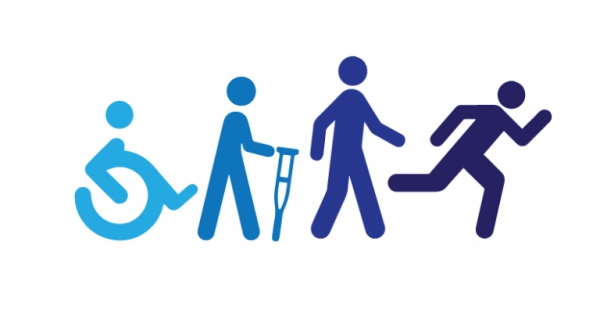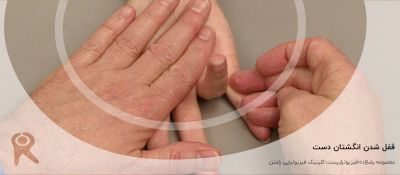Diabetes increases the risk of foot ulceration and amputation more than 23-fold and neuropathy is the major contributory factor to this increased risk. Neuropathy presents as painful neuropathy in 20% of patients and it independently predicts all-cause and diabetes-related mortality. Neuropathies are characterized by a progressive loss of nerve fibre function.
Clinically Relevant Anatomy
Cutaneous and deep sensations are mediated by superficial and deep topically distributed receptors and nerve fibers. In most patients with peripheral neuropathy, loss of sensation is directly attributable to kind, severity, and distributed loss of these sensory receptors, nerve fibers, or neurons. There is a degree of functional specificity of cutaneous and deep receptors and of their sensory nerve fibers. Thus, touch-pressure sensation of non-hairy skin is mediated by Meissner corpuscles with small receptive fields, sharp borders, and low thresholds that accommodate rapidly. Pacinian corpuscles respond to vibratory stimuli and have large receptive fields with sloping borders and low thresholds that accommodate quickly. Cooling receptors are more widely distributed and more frequent than warm receptors.
Mechanism of Injury / Pathological Process
Causes
Current thinking on the causes of diabetic neuropathy is that it is likely to be multifactorial.
Contributory factors:
- Hyperglycaemic exposure- causing increased levels of intracellular glucose in nerves, leading to saturation of the normal glycolytic pathway
- Elevated lipids
- Hypertension
- Increased production of free radicals in diabetes - this may be detrimental via several mechanisms that are not fully understood
Development of symptoms depends on many factors, such as total hyperglycemic exposure and other risk factors such as elevated lipids, blood pressure, smoking, increased height, and high exposure to other potentially neurotoxic agents such as ethanol. Genetic factors may also play a role. Important contributing biochemical mechanisms in the development of the more common symmetrical forms of diabetic polyneuropathy likely include the polyol pathway, advanced glycation end products, and oxidative stress.
Risk Factors
Risk factors associated with more severe symptoms:
- smoking
- poor glycaemic control
- advanced age
- long duration of Diabetes disease
- heavy alcohol intake
- tall stature as it is thought that this may be because longer nerve fibres are more susceptible to injury.
Clinical Presentation
More than half of cases are distal symmetric polyneuropathy. Focal syndromes such as carpal tunnel syndrome (14-30%), radiculopathies/plexopathies, and cranial neuropathies account for the rest.
Motor Symptoms
Motor problems may include distal, proximal, or more focal weakness.
- In the upper limbs- distal motor symptoms often include impaired fine hand coordination.
- In the lower limbs - Mild foot drop or frequent tripping may be early symptoms of lower limb weakness. Symptoms of proximal limb weakness include difficulty climbing up and down stairs, difficulty getting up from a seated or supine position, falls due to the knees giving way, and difficulty raising the arms above the shoulders.
Sensory Symptoms
A slow, insidious onset sensory neuropathy typically shows a stocking-and-glove distribution in the distal extremities.
Sensory symptoms may be negative or positive, diffuse or focal.
- Negative sensory symptoms include feelings of numbness or deadness, which patients may describe as being akin to wearing gloves or socks. Loss of balance, especially with the eyes closed, and painless injuries due to loss of sensation are common.
- Positive symptoms may be described as burning, prickling pain, tingling, electric shock–like feelings, aching, tightness, or hypersensitivity to touch.
Diagnostic Procedures
Testing includes assessment of gross light touch and pinprick sensation. The first clinical sign that usually develops in diabetic symmetrical sensorimotor polyneuropathy is reduction of vibratory and pinprick sensation over the toes. As disease progresses, the level of decreased sensation may move upward into the legs and then from the hands into the arms, a pattern often referred to as "stocking and glove" sensory loss. Very severely affected patients may loose sensation in a "shield" distribution on the chest.
Vibratory sense in the feet is tested with a 128-Hz tuning fork placed at the base of the great toenail.
Deep tendon reflexes are commonly hypoactive or absent.
The latest recommendations continue to advocate a multimodal approach to assessing diabetic neuropathy. This should include symptoms and signs, quantitative sensory testing, and electrophysiology.
Classification
A classification system by Thomas combines anatomy and pathophysiology.
- Hyperglycemic neuropathy (acute)
- Generalised symmetrical polyneuropathies
- Sensory neuropathy
- Sensorimotor neuropathy (chronic, symmetric)
- Autonomic neuropathy (cardiovascular, gastrointestinal, genitourinary, sudomotor)
- Focal and multifocal neuropathies: this category includes cranial neuropathy, proximal motor neuropathy (amyotrophy), thoracic or lumbar radiculopathies, and focal limb neuropathies (entrapment neuropathies)
- Superimposed chronic inflammatory demyelinating polyneuropathy (CIDP)
Another generally accepted classification of diabetic neuropathies divides them broadly into symmetrical and asymmetrical neuropathies.
Staging
A common staging scale of diabetic polyneuropathy is as follows:
- NO - No neuropathy
- N1a - Signs but no symptoms of neuropathy
- N2a - Symptomatic mild diabetic polyneuropathy; sensory, motor, or autonomic symptoms; patient able to heel walk
- N2b - Severe symptomatic diabetic polyneuropathy (as in N2a, but patient unable to heel walk)
- N3 - Disabling diabetic polyneuropathy
Medical Management / Interventions
Anticonvulsants: Gabapentin; Pregabalin; Valproate
Antidepressants:Amitriptyline; Duloxetine; Venlafaxine
Opioids: Dextromethorphan; Morphine sustained release; Oxycodene; Tapentadol; Tramadol.
Others: Topical nitrate sprays; Capsaicin cream
Physiotherapy Management and Exercise
Research has shown that strength training can moderately improve muscle function in people with peripheral neuropathy (PN). Regular exercise can also help reduce neuropathic pain and help control blood sugar levels.[13] Diabetic clients must tightly monitor their blood sugar levels during exercise to prevent major fluctuations. This may involve educating clients and monitoring blood sugars, ideally through a multi-disciplined approach in rehabilitation.










